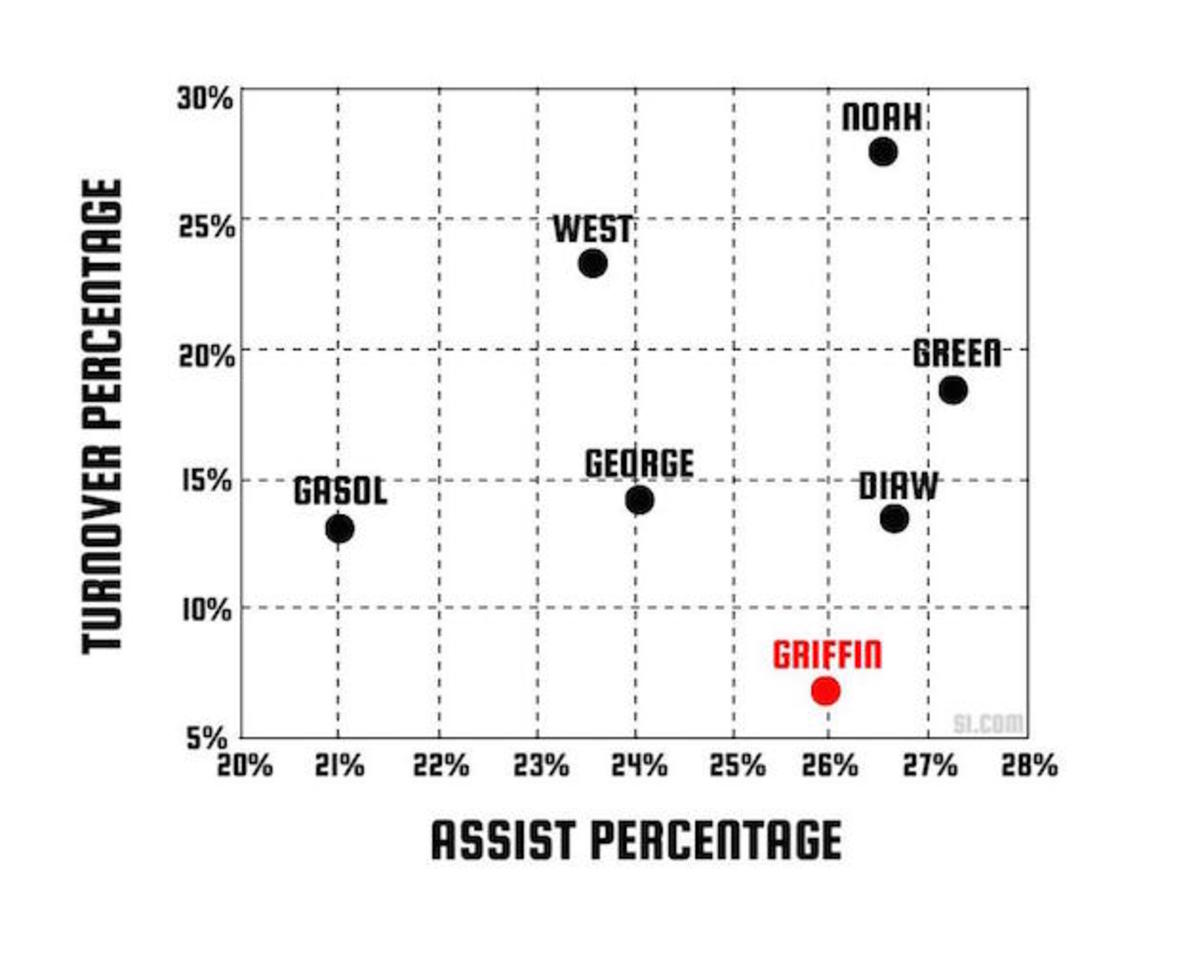The Fundamentals: Clippers' offense dictates terms through Blake Griffin

Beneath their flashy exterior and tendency to irritate, the Los Angeles Clippers play a controlled game. Chris Paul seems to spend his every waking moment conjuring ways to exploit the cause and effect implicit to opposing defenses. Then, in the heat of an actual NBA game, Paul uses his live dribble to toy with an opponent's rotational principles.
He strings a pick-and-roll out sideways to alter its geometry completely. He forces a commitment from an opposing big just to see how the layout of the defense changes and what options are left unaccounted for. Running an offense is a fine art, but one gets the impression from Paul's style of play that he has an appreciation for the scientific method—every independent variable is explored until one yields an easy score.
This approach again supports the Clippers' candidacy as one of the league's best offenses. All eyes turn to Los Angeles when Paul—along with Blake Griffin and DeAndre Jordan—ignite for a fast break. The real magic, however, happens in a halfcourt game where two of the league's most cerebral creators work in concert to make the most of every possession. The Clippers, exact as they are, stand as proof of the dividing line between "meticulous" and "slow."
Open Floor guests: Paul Millsap dishes on Hawks; Frank Isola on Knicks
Precision of that caliber wouldn't be possible without Griffin. A single, ball-dominant point guard can't have full command of every possession; eventually a virtuoso like Paul would be trapped and pressured, if not worn down by his responsibility. Griffin provides a necessary counterbalance as the most threatening playmaking big in the league. Getting him the ball exercises a similar measure of control from a different angle:
Once Griffin finds himself guarded by Pistons rookie Stanley Johnson, he clears the floor and demands the ball at the high post. It takes a single dribble to bait the double team Griffin was prepared for all along and a single step by the help defender to trigger Griffin's kick-out pass to an open Paul Pierce. Different initiator of the offense, same stimulus and response.
• MORE NBA: McHale firing no rash move | Pistons win around Drummond
Put his creation and Paul's together and you have something even more remarkable. The Paul-Griffin pick-and-roll is rarely just that; what makes the synergy of these two so special is that Paul can position his passes to Griffin so perfectly that defenders have to respond immediately and leave another scorer open. Sometimes it's J.J. Redick, who is posting an outstanding 77.1% effective field goal percentage off of Griffin's passes. Sometimes it's DeAndre Jordan, who is finishing 83.3% of his shot attempts created by Griffin. Regardless, the Clippers' All-World power forward never seems to miss the next player in sequence when the defense gives him an opening:
The fact that the Clippers rely on two core superstars to generate so much of their offense isn't at all unusual. What makes this particular formula exceptional is how little is wasted; the Clippers rank second in the league in turnover rate this season after placing the same in that metric last year, keeping the offense lean and vicious. Paul's turnover rate is impressive as compared to other top-assisting guards. Griffin, though, is a complete anomaly. The Clippers' top shot-taker (Griffin attempts nearly seven more shots per game than his closest teammate), key facilitator, and secondary ballhandler is somehow creating all kinds of great looks while only turning the ball over on 7.1% of his possessions.
That kind of figure is generally reserved for reluctant passers or spot-up shooters. Griffin, by contrast, is assisting on better than a quarter of his teammates' field goals and doing so from a position that often requires him to read and react in a split second off the catch. If Griffin were more careless, he might barrel through a defender for a charge. Were he less perceptive, he might not see the defender antsy to jump into the passing lane. Were he any less precise, his alley-oops and kick-out passes might not find their targets. That he avoids these pitfalls separates him cleanly from even the league's best-passing big men:

According to data from NBA Miner, Griffin has registered just four bad-pass turnovers all season. Some of the league's best players (Russell Westbrook and James Harden) commit around three per game. That distinction anchors the Clippers. Whether playing with or without Paul, Griffin is carrying the offense by exercising control, scoring with variety, and setting up his teammates like no big in the league can.
This is how the Clippers win. There are still lingering questions regarding the stability of the bench and the strength of the defense from matchup to matchup. Griffin, though, is vital in elevating reserve lineups without a reliable point guard and ensuring that Los Angeles is able to set its defense as often as possible. Turning the ball over so infrequently has made the Clippers one of the best teams in the league in transition prevention, as measured by the percentage of an opponent's possessions used on the break (per Synergy Sports). Running consistently requires stops and steals. The Clippers, through masterful direction, minimize both. It's all about control.
